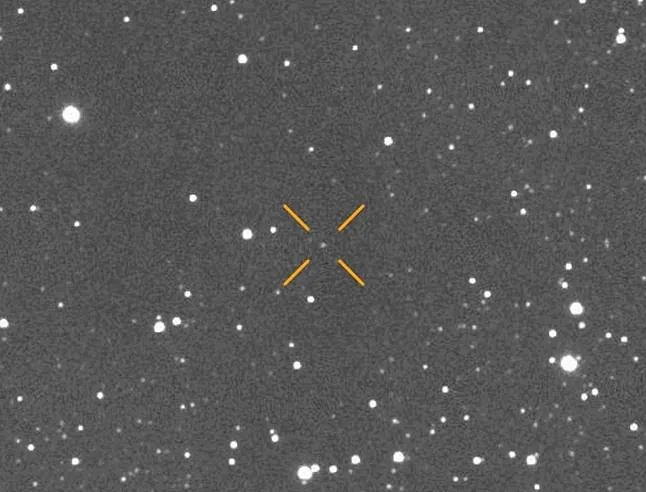It was discovered on July 1 and in less than three days, astronomers have determined that it is an interstellar comet, meaning it comes from outside our solar system. This is only the third time that visits from objects from a different solar system have been detected, with 3I/ATLAS being the third one captured by telescopes.
"It was very quick. It was discovered from Chile with one of the early detection network ATLAS telescopes, dedicated to detecting asteroids that approach Earth and may pose a collision risk, but since it scans the sky, it detects many more things," explains Julia de León, a researcher at the Institute of Astrophysics of the Canary Islands (IAC).
Images taken during the night of July 2 with the ATLAS-Teide telescope.
Currently, the comet is heading towards the Sun and will reach its closest approach on October 30, at a distance of 1.354 astronomical units, equivalent to 200 million kilometers away. This comet poses no threat to Earth, even at its closest approach in December, being at a distance of about 270 million kilometers.
Regarding its size, initial estimates suggest that 3I/ATLAS could have a diameter between 10 and 30 kilometers, but this is just an estimation based on the reflection of sunlight. Further observations are needed due to the nature of comets.
Discoveries and mysteries about Oumuamua and 2I/Borisov, the only two known interstellar objects
In this very short list of interstellar objects are the famous Oumuamua, discovered in 2017, and the comet 2I/Borisov, detected in 2019. Oumuamua was considered an asteroid due to the lack of observations of a coma, while Borisov was confirmed to be similar to most comets in our solar system.
Once these visitors leave the Solar System, they will not be observable again as they are not gravitationally bound to the Sun.
The Institute of Astrophysics of the Canary Islands will continue tracking the comet with the ATLAS-Teide telescope and plan new observations with other telescopes.
